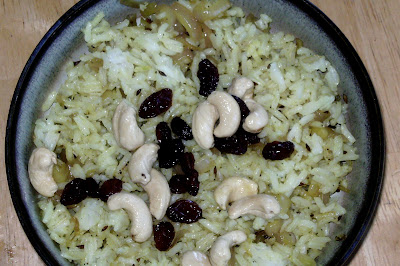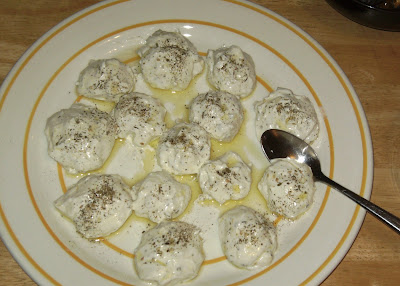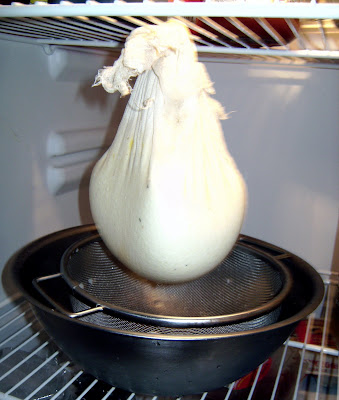
Do we spend enough time talking about how much we love okra? Probably not. We'd start another blog called I Heart Okra, but we're assuming there's a limited market for I Heart [Green Thing] blogs. Here's another way to showcase our favorite mucilaginous vegetable. This sambhar--inspired by versions we had in Kerala and adapted from
Savoring the Spice Coast of India--is like an Indian answer to gumbo: thick, satisfying, spicy, and okra-licious.
1 and 1/2 cups water
1/2 cup yellow split peas, rinsed
3 tablespoons coconut oil
1/8 teaspoon fenugreek seeds
1 cup pureed tomato
2 medium-sized Yukon Gold potatoes, cubed
1 cup minced onion
1 jalapeno chile, sliced lengthwise (you can scoop the seeds out if you want less spice)
12 branches cilantro: stems and leaves minced separately
4 teaspoons coriander powder
1 teaspoon cumin
1/4 teaspoon cayenne
1/4 teaspoon turmeric
1/4 teaspoon black pepper
1/4 teaspoon asafoetida*
Salt
1 teaspoon tamarind paste
1/4 teaspoon mustard seeds
1 dried red chile
1 sprig curry leaves, stemmed (optional, if you can find them)
1/2 lb. okra, ends trimmed, sliced lengthwise
Combine water and dal in a small saucepan and bring to a boil, then lower heat and simmer 30-40 minutes, until dal is soft.
In a large saucepan, heat 1 tablespoon of the coconut oil over medium-high heat. When hot, add the fenugreek seeds and stir for 3o second or so, just until they brown. Add 2 cups water, potatoes, tomato, onion, jalapeno, cilantro stems, spices, salt and tamarind. Bring to a boil, reduce heat and simmer 15-20 minutes, until potatoes are fork-tender.
Meanwhile, heat 2 tablespoons coconut oil in a wok. (Yes, we're making you dirty three separate pans! It's worth it, though). Add the mustard seeds, and when they pop, add the curry leaves and chiles and stir quickly. Throw in the okra and fry until it starts to brown, about 10 minutes or so, stirring constantly.
Now put it all together: pour the peas and okra into the large saucepan with the veggies and taste for salt. Top with the minced cilantro leaves and serve.
*ETA: Apparently asafoetida is not gluten-free, so please leave it out if you're cooking for anyone who is! Don't worry, the sambhar will still be okra-tastic and yummy.




































 nutes), remove from heat and serve immediately.
nutes), remove from heat and serve immediately.









